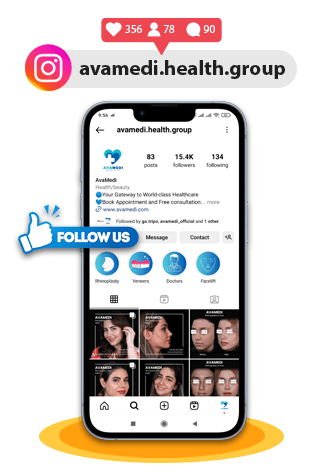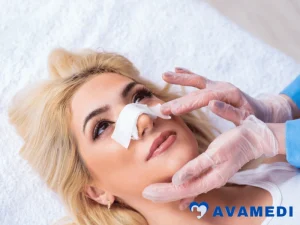A Skinny BBL (Brazilian Butt Lift) is a specialized fat transfer procedure for individuals with a lower body fat percentage who still want to enhance their curves. Unlike a traditional BBL, which requires a significant amount of excess fat, a skinny BBL is tailored for leaner patients with minimal fat reserves.
One of the biggest concerns for those considering a skinny BBL is whether they meet the weight requirements for the procedure. Since the surgery relies on fat transfer, patients need to have enough harvestable fat for a successful outcome. But what exactly are the Skinny BBL weight requirements? Let’s dive into the details.
Understanding Skinny BBL Weight Requirements
Unlike traditional BBLs, which are designed for people with a higher fat percentage, a skinny BBL is customized for thinner individuals. However, even for a skinny BBL, surgeons require a minimum amount of fat to work with.
How Weight Affects BBL Outcomes
Your weight plays a critical role in the outcome of a BBL. If you are too thin, you may not have enough fat to transfer, which can lead to unsatisfactory results. On the other hand, if you have just enough fat but do not follow post-surgery care properly, weight fluctuations can impact your final shape.
Read more: Skinny BBL vs BBL: What’s the Difference?
Ideal BMI for Skinny BBL
The ideal BMI (Body Mass Index) range for a skinny BBL is typically between 18 and 22. If your BMI is below 18, it may be challenging to find enough donor fat for the procedure.
Some surgeons may work with patients who have a BMI as low as 17, but this depends on factors such as fat distribution and overall health. If you are underweight, your surgeon may recommend gaining a few pounds before undergoing surgery.
Minimum Fat Requirement for a Skinny BBL
Most surgeons require a minimum of 1000 to 1200cc (about 1 to 1.2 liters) of fat for a skinny BBL. This is because only about 60-80% of transferred fat survives, so a higher initial volume is necessary to achieve visible results.
The fat is usually taken from:
- Lower abdomen
- Flanks (love handles)
- Thighs
- Upper arms
If a patient has very little fat, they may need to gain weight before the procedure.
How to Gain Weight for a Skinny BBL
If you’re struggling to meet the minimum fat requirements, doctors may recommend a weight gain plan that includes:
- High-calorie, healthy foods like avocados, nuts, and lean meats
- Protein-rich meals to build soft tissue
- Supplements such as protein shakes or weight gainers
However, gaining too much unhealthy fat can lead to poor surgical results. The goal is to gain soft, even fat that can be safely transferred.
Alternative Fat Sources for a BBL
For patients who don’t have enough body fat, some alternatives include:
- Sculptra injections (a type of dermal filler)
- Hip and butt implants
However, these options do not provide the same natural feel as a fat transfer.
Liposuction in Skinny BBL
When you hear “Brazilian Butt Lift (BBL),” you might imagine dramatic curves and ample volume. But the Skinny BBL flips the script, offering a more tailored, understated enhancement—and liposuction plays a starring role in this delicate dance of contouring. Let’s unpack how liposuction works in a Skinny BBL and why it’s critical to achieving that coveted “slim-thick” silhouette.
In a traditional BBL, liposuction removes large volumes of fat from areas like the abdomen, thighs, or love handles to harvest enough fat for buttock augmentation. However, the Skinny BBL is designed for individuals with less body fat, so the approach shifts to precision.
Here’s how it works:
- Strategic Fat Harvesting: Surgeons target stubborn fat pockets in areas like the lower back, flanks, or upper abdomen—spots where even slim patients often retain fat. The goal isn’t just to collect fat for transfer but to subtly sculpt the waist and torso, enhancing the hourglass effect.
- Less Is More: Unlike traditional BBLs, which may require 1–2 liters of fat, a Skinny BBL uses smaller amounts (sometimes as little as 500ml). This means liposuction is gentler, focusing on refinement rather than bulk removal.
The Art of Fat Redistribution
The harvested fat is purified and injected into the buttocks, but the focus is on shaping rather than sizing. Surgeons use micro-grafting techniques to layer tiny amounts of fat, creating a lifted, rounded appearance that complements a lean frame. Think of it as “3D contouring”—enhancing natural curves without overwhelming the body’s proportions.
For example, a petite patient might get fat injected along the upper buttocks to create a subtle “shelf” effect, while slimming the waistline through strategic liposuction. The result? A balanced, athletic look that appears earned through Pilates, not surgery.
Why Liposuction Technique Matters?
In Skinny BBLs, surgeons often use advanced liposuction methods like VASER (ultrasound-assisted) or micro-liposuction to minimize trauma to surrounding tissues. These technologies improve fat survival rates, which is crucial when working with limited fat reserves.
The liposuction step isn’t just about fat removal—it’s also about creating smooth transitions between the waist, hips, and buttocks. Even minor irregularities can disrupt the natural look, so skill and attention to detail are non-negotiable.
Recovery and Realistic Outcomes
Since less fat is removed, recovery from a Skinny BBL’s liposuction phase is often quicker than with a traditional BBL. Patients may experience mild swelling and bruising, but most return to light activities within a week. However, maintaining results requires a stable weight, as significant fluctuations can alter the sculpted shape.
If you’re considering a Skinny BBL, prioritize a board-certified surgeon experienced in advanced liposuction techniques. After all, the magic lies not in the quantity of fat moved but in the precision of the artist behind the scalpel.
Where Do Surgeons Harvest Fat From?
A skinny BBL still requires liposuction, but since there’s less fat to work with, the surgeon must carefully extract fat from multiple areas of the body.
Read more: Skinny BBL Cost and Price Comparison
Who Qualifies for a Skinny BBL?
Patients with a low BMI may face challenges such as:
- Fat survival issues – Less fat may mean a higher reabsorption rate
- Longer healing times – Thinner patients may have slower recovery
- Irregular fat distribution – Fat placement must be evenly distributed
This is why choosing an experienced surgeon is critical.
Best Candidates for a Skinny BBL
A good candidate for a skinny BBL should:
- BMI for skinny BBL is between 18-22
- Have some fat reserves for liposuction
- Be in good overall health
FAQs
What is the lowest weight for a skinny BBL?
Most surgeons recommend a BMI of at least 17-18 for safe fat transfer.
Can I get a BBL if I have no fat?
If you have very little fat, you may need to gain weight or consider alternative procedures.
How long does a skinny BBL last?
Results can last several years if you maintain a stable weight.
Do I need to gain weight for a skinny BBL?
If your BMI is too low, a moderate weight gain may be recommended.
Can I do a skinny BBL twice?
Yes, some patients choose a second round of BBL for additional volume.
Conclusion
A skinny BBL is a fantastic option for leaner patients looking to enhance their curves, but meeting the weight and fat requirements is crucial for success. If you’re considering the procedure, make sure to consult with a board-certified surgeon to determine whether you qualify and how to achieve the best results.




















